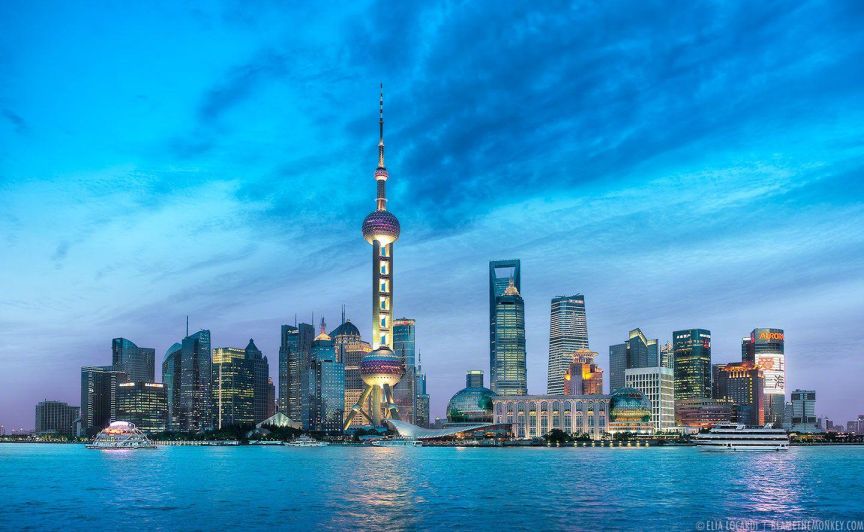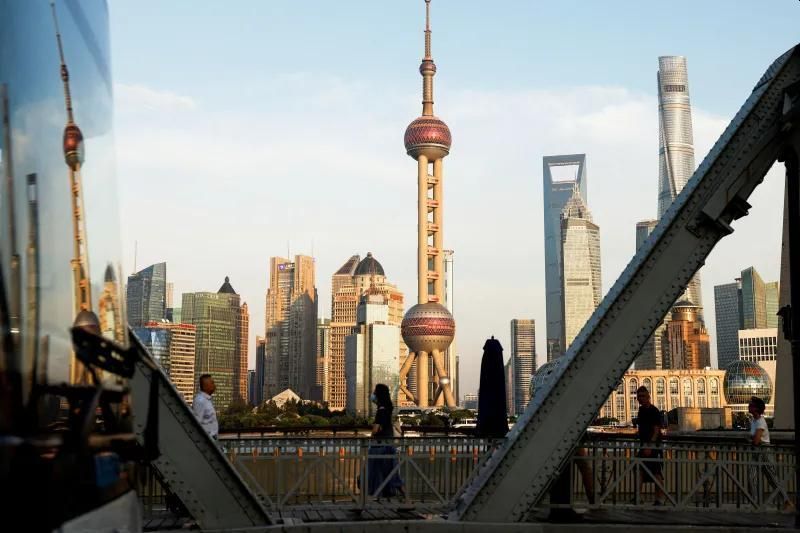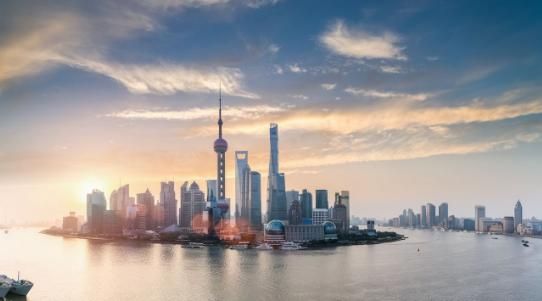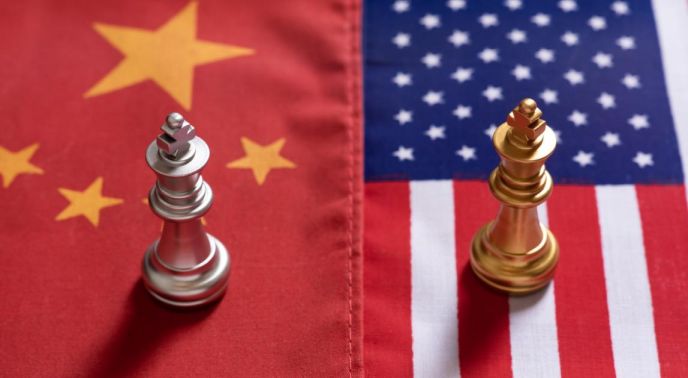By Eric Vandenbroeck and co-workers
Why America’s China Strategy is
Incomplete
Growing the U.S.
economy is at the top of President-elect Donald Trump’s agenda, and tackling the
many challenges in the U.S.-Chinese trade and investment relationship will be
central to realizing this objective. Much of Trump’s rhetoric has focused on
the use of tariffs: tariffs to rebalance the bilateral trade deficit, tariffs
to incentivize U.S. multinational firms to restore their supply chains and
reduce their reliance on Chinese manufacturing, and tariffs to prevent other
countries from answering China’s call to de-dollarize the global economy.
But tariffs are only
one tool in a much larger toolkit. And if the United States is to protect its
economic strength and move its critical supply chains and those of its partners
out of China’s reach, it will need all its tools. During his first term, Trump
and his team began an effort to disentangle the U.S. and allied economies from
China. President Joe Biden’s administration built on that foundation,
developing domestic programs and foreign partnerships to diversify U.S. supply
chains and invest in critical industries.
Washington, however,
is still competing with one hand tied behind its back, and progress, although
significant, is moving too slowly. It will take a full suite of economic
incentives, public-private partnerships, and investment and trade deals to
reduce the United States and its partners’ reliance on China. U.S. partners,
concerned about Chinese influence themselves, are eager to work with
Washington. If Trump can embrace a more ambitious economic and trade policy,
his second term can supercharge the global shift away from dependency on
Chinese supply, bolstering the U.S. economy and enhancing U.S. national
security.
Laying the Foundation
The U.S. economy is
one of the strongest in the world. According to the annual Asia Power Index,
which is published by Australia’s Lowy Institute and tracks the resources and
influence of countries across the Indo-Pacific region, the United States has overtaken
China over the last few years in terms of general economic capability and
projected future resources. The United States has also maintained its lead in
overall resilience, a measure that includes indicators such as internal
stability and energy security. But the index also shows that Washington is
punching below its weight in the critical area of economic relationships, which
measures a state’s ability to use economic interdependence to exercise
influence and leverage over trade and investment partners. Here, the United
States ranks a distant second to China. And if the United States is
underperforming in this measure in Asia, the same is likely true in Africa and
South America, regions where China is the largest trading partner and an
increasingly dominant source of investment.

Beijing’s lopsided
advantage reflects the global economy’s continued overreliance—both real and
perceived—on China. For decades, China’s massive size
and growth created a sort of gravitational pull. Countries and companies raced
to take advantage of the opportunities China offered. Beijing used industrial
policy, low-cost labor, intellectual property theft, and trade and investment
barriers to shape those interactions and push Chinese firms to the center of
global value chains. As a result, Chinese companies are now at the forefront of
investing in and deploying the industries and technologies—such as mining,
clean energy, and information and communications technology—that will drive
economic growth and ensure economic security for the rest of the century.
Many countries and
multinationals recognize that they are too reliant on China and are seeking
other options. The COVID-19 pandemic demonstrated the risk of overdependence on
any single supplier, even a benevolent one. And Beijing has shown that it is not
benevolent. Countries now worry about Chinese
economic coercion reducing their exports and investments, Chinese
overcapacity harming their domestic industries, and potential Chinese military
action against Taiwan disrupting critical supply chains and make the world
economy more resilient. Early steps in this direction began in the final months
of the first Trump administration. In May 2020, U.S. officials
initiated talks with semiconductor companies, including Taiwan
Semiconductor Manufacturing Company, the U.S.-based Intel, and the South
Korean–based Samsung, about how best to incentivize these firms to build
cutting-edge fabrication plants in the United States, whether through
public-private partnerships, tax credits, or grants and loans. Biden built on
these initial efforts when he signed—with bipartisan support—the 2022 CHIPS and
Science Act, which has so far awarded a total of more than $30 billion to 27
companies and catalyzed over $400 billion in private-sector investment for
domestic semiconductor manufacturing.
The Biden
administration has also laid other groundwork. In early 2021, it released an
executive order that prioritized supply chain diversification, focusing on
critical minerals, semiconductors, advanced batteries, and active
pharmaceutical ingredients. The order put the United States well ahead of its
peers in reducing the exposure of critical sectors to China, and since its
passage, Japan and the European Union have both announced their economic
security strategies that prioritize supply chain resiliency.
The 2022 Inflation Reduction Act, like the CHIPS and
Science Act, has also triggered a race to the top as companies diversify their
manufacturing supply chains to benefit from manufacturing incentives and other
clean energy subsidies. In its first two years, the IRA attracted investments
equaling more than $215 billion in the battery,
electric vehicle, renewable energy, and nuclear energy sectors. The law
includes strict local content requirements for companies to receive tax credits
for electric vehicle production: 50 percent of the critical materials used must
be sourced from the United States or a country with which the United States has
a free-trade agreement. By 2027, that figure will rise to 80 percent. The
emphasis on domestic spending is the centerpiece of the U.S. strategy. It
signals to markets that there is money to be made in alternatives to Chinese
goods, bringing advanced manufacturing jobs back to the United States.

Supply Chains and Semiconductors
The Biden
administration has taken advantage of other countries’ interest in “de-risking”
their economies to create a centripetal force, pulling allies and partners
toward new, more secure and more resilient supply chains. One focus is critical
minerals, an area in which China accounts for roughly two-thirds of global
production. In this sector, Beijing has a near monopoly on graphite, a mineral
needed to make electric vehicle batteries. Periodically, China has used its
control of these supply chains to pressure other countries, cutting them off
from much-needed supplies. In 2023, the Chinese government rolled out new
export controls on graphite as well as gallium and germanium—minerals for which
Western dependence on Chinese supplies is particularly high. The restrictions
were a warning shot. The only way to reduce Beijing’s leverage is to bring new
supplies to the global market. This requires considerable funding, both for
mines and for processing plants that turn raw materials into final products.
Anticipating the problem,
Washington launched the Minerals Security Partnership in
2022 to invest in sustainable critical mineral supply chains. The partnership
now includes 14 countries (Australia, Canada, Estonia, Finland, France,
Germany, India, Italy, Japan, Norway, South Korea, Sweden, the United Kingdom,
and the United States) and the European Union. The group also works with
mineral-producing countries, such as Argentina, the Democratic Republic of the Congo, and Zambia, that are equally concerned about
overdependence on China. Partnership countries do not want China to be their
only source of critical minerals, and producing
countries do not want Beijing to be their only source of investment. Both sides
are looking to diversify. Two years in, this program is already moving markets.
In May, the MSP announced a deal between the Belgian-based refiner Umicore
and STL, a mineral processing company in the Democratic Republic of the Congo, to bring new germanium supplies to market. In
September, it announced the South Korean–based steel manufacturer POSCO would
be teaming up with Australia’s Black Rock Mining to develop a graphite mine in
Tanzania. These types of multinational, public-private
partnerships enable the United States and its partners to compete with Chinese
suppliers, making all countries involved—including the producers—more
resilient.
Washington is making
progress outside of the MSP, too. The U.S. Department of Defense is signing
agreements with non Chinese
suppliers, which helps strengthen alternative supply chains by giving mines and
processing plants guaranteed revenue. Pentagon purchases support a graphite
project in Alaska, graphite and cobalt projects in Canada, and a graphite mine in Australia, among others. In Greenland,
where Washington and Beijing have been jostling over access to the world’s
largest rare-earth deposits, Critical Metals Corp, the U.S. subsidiary of
European Lithium Limited, won the bid to acquire a controlling share in the Tanbreez Rare Earth Mine. A Chinese-invested competitor
attempted and failed to secure a mining license to develop a neighboring site
to tap into the same rare-earth deposits.

For now, the United
States and its partners in East Asia and Europe dominate the global
semiconductor industry. However, Beijing is estimated to be investing more than
$150 billion over a decade and a half to catch up with the leading-edge chip
designers and manufacturers and dominate this supply chain. Washington and its
partners’ lead therefore needs shoring up, lest semiconductors go the way of telecommunication equipment, solar cells,
electric vehicles, critical minerals, and other industries in which China’s
overwhelming share gives it dangerous influence.

The financial district in Shanghai, September 2024
Some of this work has
already started with the CHIPS and Science Act. As domestic semiconductor
manufacturing ramps up, new plants will need access to upstream manufacturing
inputs and downstream processing capacities that are free from Chinese control.
The law therefore provides $500 million to the State Department for a fund to
make smart international investments in those supply chains.
Downstream processing
investments were the first out of the gate. After chips come off the high-end
fabrication lines in the United States, much of the testing, packaging, and
assembly will be done in lower-income countries, a system that keeps costs down
but preserves production jobs at home. The U.S. government has directed funding
to countries that are ready to get these processes up and running quickly.
Costa Rica, for example, was a fast mover. Together with the Organization for
Economic Cooperation and Development, Washington is working with the Costa
Rican government to make the local regulatory system more attractive to private
investors. With State Department funds, Arizona State University—which has a
leading semiconductor program—will train Costa Rican workers. Intel also recently announced new investments in the
country. And U.S. investments do not stop there: the State Department is also
disbursing funds across the Americas and Asia, including to India, Indonesia,
Mexico, Panama, the Philippines, and Vietnam.
These types of
on-ramps to the U.S.-centric chips supply chain provide partner countries the
flexibility to ignore some of Beijing’s demands. In August 2023, for example,
Costa Rica issued new cybersecurity regulations banning “untrusted vendors”
from its telecom networks. (The Chinese company Huawei, a target of the ban,
subsequently sued the Costa Rican government.) Access to the U.S. semiconductor supply chain likely helped assure the
Costa Rican government that it could weather a backlash from Beijing. For other
U.S. partners, funding programs open the door to a high-tech, U.S.-centric
economic growth option. With the alternative being a lower-value-added,
China-centric option, it is no surprise that they are racing to get in.
New Deals
The Indo-Pacific
Economic Framework for Prosperity (IPEF), an initiative the Biden
administration launched in May 2022, is taking supply chain diversification to
the regional level. In early 2024, the United States and the framework’s other
13 members (Australia, Brunei, Fiji, India, Indonesia, Japan, Malaysia, New
Zealand, the Philippines, Singapore, South Korea, Thailand, and Vietnam) began
implementing an agreement that established a supply chain council to align
policies and develop new initiatives, a crisis response network to share
responsibility for identifying and addressing vulnerabilities, and a labor
rights advisory board to represent workforce interests. The council already has
plans to focus on three sectors that are core to economic competitiveness:
semiconductors, chemicals, and critical minerals, particularly the minerals
needed to manufacture electric vehicle batteries.

The framework also aims
to energize U.S. and other investments in the region’s clean economy sector. In
June, Singapore hosted an IPEF clean economy investment forum that drew 150
companies and investors and identified $23 billion in priority projects for
sustainable infrastructure. U.S. companies such as Amazon Web Services, Bloom
Energy, Google, and I Squared Capital also announced billions of dollars of new
investment in clean energy and information and communications technology
projects in the region. And together with Australia, Japan, and South Korea,
the United States created an investment fund that is supporting a renewable
energy platform in India, as well as projects in Indonesia and Vietnam.
In the Indo-Pacific
and beyond, the International Development Finance Corporation, a U.S. agency
created during the Trump administration, has been financing deals that help
U.S. and foreign firms get a foot in the door in sectors dominated by China.
The agency, for example, is investing $55 million to develop nickel and cobalt
mining in Brazil and $50 million in a rare-earth processing facility in South
Africa. Both projects reduce China’s stranglehold on critical minerals. A $50
million credit guarantee—which Japan matched, providing $50 million from its
own development bank—enabled the Australian company Telstra to outbid a Chinese
state-owned enterprise to acquire telecom assets in the Pacific Islands. The
International Development Finance Corporation also financed the Greek company
that won a shipyard bid near Athens and the Turkish firm that will expand and
operate the Freetown International Airport in Sierra Leone. Both deals
countered likely investments from Beijing. The state-owned China COSCO Shipping
Corporation had expressed interest in the Greek shipyard; Sierra Leone canceled
an existing loan agreement with Beijing that would have funded a more expensive
airport project. The U.S. agency, furthermore, provided a $500 million loan to
support a solar project in India that is using new technology to produce solar
cells without the need for Chinese polysilicon. Project by project, the United
States is creating alternatives to reliance on China.
The Missing Piece
Efforts to de-risk
the U.S. economy and the economies of U.S. allies and partners through supply
chain diversification and targeted infrastructure investment have made real,
measurable gains. Supply chains are moving. New projects are coming online. But
progress is slow, labor-intensive, and expensive. If the goal is to secure U.S.
and global supply chains and reduce China’s leverage over the United States and
its partners, then Washington cannot holster the biggest weapon in its arsenal:
trade.
For four years, the
Biden administration considered trade deals to be off limits, a political third
rail. But trying to rewire supply chains only with direct incentives, as the
CHIPS and Science Act and the IRA offer, will not be enough. If the global market
is set up in ways that make Chinese goods more attractive than others,
subsidies and other direct incentives are rowing upstream. They can incentivize
companies to build new mines and fabrication plants, but those companies still
need to find buyers for their products. Doing so is difficult when Chinese
alternatives are always cheaper—and Beijing can drop prices even lower if it
chooses. As the Chinese government continues to subsidize both domestic
manufacturing and overseas investment and sign new trade deals that further
reduce the cost of trade with China relative to trade with the United States or
its partners, Beijing will persistently undermine the progress Washington has
made. The price of pivoting to non-Chinese supplies
and suppliers will only go up. Critical minerals sourced outside
China, for example, are now becoming available, but the viability of new
projects is challenged as Beijing dumps minerals into the market at rock-bottom
prices in a bid to drive U.S.-funded alternatives into bankruptcy. The U.S. and
allied governments will need to step in to keep the new
ventures afloat and to convince companies to pay a premium on manufacturing
inputs instead of sticking with cheaper Chinese options.

Trade deals are the
cost-effective solution. They are the most efficient way to make doing business
with preferred partners cheaper. The best way for the United States to de-risk
its economy would thus be to strike multilateral, high-standard trade deals
that pull business away from China and toward friendlier destinations. After
Beijing joined the World Trade Organization in 2001, the resulting drop in
cross-border trade barriers contributed to the shift of jobs and supply chains
toward China. Signing new trade deals with allies and partners that lower
tariffs and align environmental standards, cross-border data transfers, labor
safeguards, intellectual property protection, and regulatory burdens would
produce similar effects but in the opposite direction—toward near-shore and
“friend-shore” alternatives, which would make the United States more secure.
One option would be
to work through the 13-country Comprehensive and Progressive Agreement for
Trans-Pacific Partnership, or CPTPP. Joining the CPTPP would provide simplified
customs and trade facilitation measures, alignment on the rules of origin, and regulatory
efficiencies that would give the United States an advantage in trade and
investment with fellow member countries and would thus help move supply chains
out of China. This trade agreement was politically toxic in the United States
due to the perception that it would mean losing American jobs to developing
countries; Trump withdrew from its predecessor agreement, the Trans-Pacific
Partnership, in early 2017. But soon the costs of remaining outside the CPTPP will start to bite. CPTPP tariff reductions are
phasing in over time, and once they are fully implemented, parties to the deal
will enjoy comparative advantages trading with one another, and U.S. exporters
will be left on the sidelines. The Peterson Institute for International
Economics has estimated that the United States’ failure to join the original
TPP translates into an annual loss of $2 billion in real income and forgone
potential gains of $131 billion. The U.S. agricultural sector has been
particularly hard hit, losing an estimated $1.8 billion in exports annually.
Signing onto CPTPP, in contrast, could increase U.S. exports of dairy, beef,
and pork by almost $3 billion, according to the Purdue University Global Trade
Analysis Project.
Washington and
Beijing are in direct competition for the benefits of admission to the CPTPP.
If China is admitted, membership will no longer be an option for the United
States. As a member, China would be in the position to block other countries,
including the United States, from joining. Even if China did support U.S.
accession, Beijing’s membership in the pact would make Washington more hesitant
to sign up, out of concern that China was not fully complying with existing
standards and would be in a position to dominate
future rule setting. Current signatories have thus far resisted the pressure to
let Beijing in, largely based on the hope that the United States may eventually
shake off its trade-deal paranoia and join. If that hope fades, China will
pounce, and U.S. exporters will pay the price. China’s alternative multilateral
trade agreement, the Regional Comprehensive Economic Partnership, is already
expected to harm U.S. businesses; the UN Conference on Trade and Development
has estimated that the deal would reduce annual U.S. exports by more than $5
billion as trade is diverted to RCEP countries.
If the Trump
administration is unwilling to consider joining CPTPP, it should pursue another
ambitious trade project in order to put Beijing on its
back foot. Washington could take the approach set out in the U.S.-Mexico-Canada
Agreement global. The USMCA, negotiated during Trump’s first term, strengthened
labor, environmental, intellectual property, and digital trade provisions in
ways that aligned with U.S. business interests. It also improved access to
Canadian and Mexican markets for the U.S. automobile and agricultural sectors,
as well as for small and midsize American businesses. Trade and investment
among the three countries increased significantly after the agreement was
signed. To expand that model, the new administration could pursue a high-standard,
allies-only trade deal—bringing in advanced economies such as Australia,
Canada, Japan, South Korea, Taiwan, the United Kingdom, and the European
Union—that would protect critical supply chains by giving U.S. and allied firms
preferential access to trusted technology and secure supplies. Restricting the
deal to advanced economies would also reduce the likelihood of high-quality
manufacturing jobs leaving the United States, lowering the chances of a
political backlash.

If a comprehensive
multilateral trade agreement remains beyond the reach of the administration, an
easier political sell would be bilateral trade deals.
Taiwan presents one such opportunity. In a September 2022 congressional hearing
on U.S.-Taiwanese trade, U.S. agricultural representatives argued for such a
deal on the grounds that it would lower Taiwanese tariffs and boost U.S.
exports to Taiwan. Another option would be a sector-specific approach, which
could take the form of a “buyers club” for critical minerals.
If members of the Minerals Security Partnership agreed to source only from
mines and processing plants that meet certain requirements, that would drive
business toward the non Chinese
enterprises coming online, as most Chinese projects do not adhere to high
environmental or safety standards. Still, bilateral or sector-based trade deals
are less efficient than a more sweeping arrangement, as it takes more time and
resources to negotiate and monitor multiple small agreements than to manage one
large deal.
Trump has the opportunity to put forward a bold economic policy to
energize and protect the American economy. The across-the-board tariffs he
seems to prefer will not realize these objectives—and could well undo recent
progress, leaving the United States in a worse position than before. His
administration should begin, instead, with a full review of the foundation of
U.S.-Chinese economic policy that was created during his first term and
expanded by the Biden administration. The Office of the United States Trade
Representative has gathered more than 1,400 comments from industry as part of a
four-year tariff review—the Trump team should now use this information to
determine where tariffs are actually helping U.S.
business and where they are not. And it will have to consider the full range of
economic tools at Washington’s disposal. No single one can address the array of
economic challenges China presents to the United States, and the job is far
from done.
For updates click hompage here